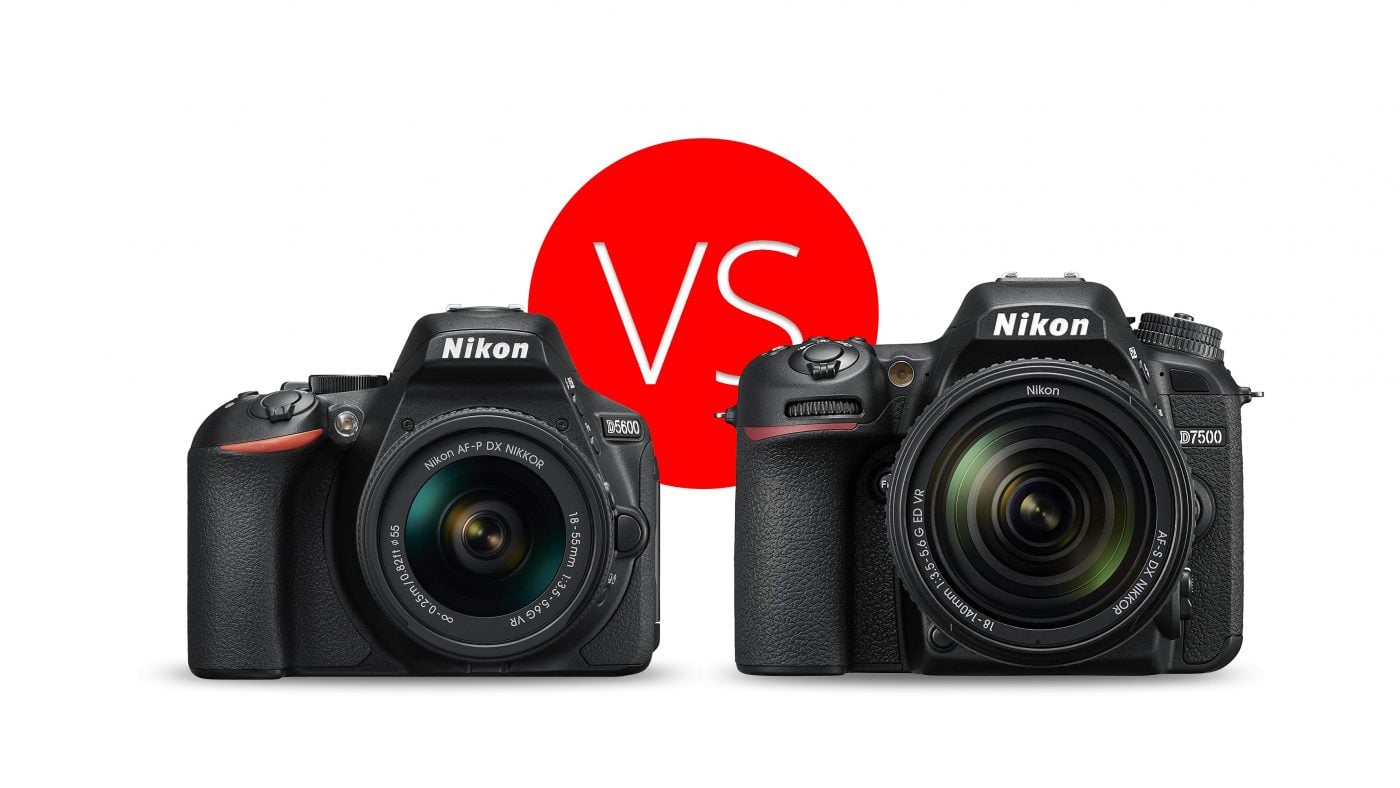The Nikon D7500 has some upgrades and some unusual changes from its predecessor, and not all of them are for the better. On the other hand, the D5600, which now has a higher resolution sensor and rear LCD than the D7500, remains an excellent camera that is only slightly hampered by a limited feature set. As a result, deciding which camera is “better” is not as simple as it once was. In fact, for some photographers, the older D7200 will offer the best of both worlds, while they’re still available. My general advice is always this: buy the least expensive camera that will meet your needs, and buy the best lenses that you can afford. Below, I’ll cover the differences between these cameras and explain which types of photographers will find the different features useful.
Nikon D5600 vs D7500: What’s the Difference?
To begin with, let’s take a look at the most significant specs for the D5600 and the new D7500.
| Nikon D5600 | Nikon D7500 | |
|---|---|---|
 |
 |
|
| Price (body) |
$899.00 | $796.95 |
| Price With Kit Lens (18-140mm VR) |
$1,200.00 | $996.95 |
| Body Material | Plastic Monocoque Body | Plastic Monocoque Body |
| Dust/Weather Sealed Body | None | YES |
| Sensor Resolution | 24.2 | 20.9 Megapixel |
| Anti-Aliasing Filter [OLP] (Reduces sharpness, prevents moire) |
NO | NO |
| ISO Range | 100-25600 | 100 - 51200 |
| Total AF Points | 39 | 51 |
| Cross-Type AF Points | 9 | 15 |
| AF Motor In Body (For Using Older AF Lenses) |
NO | YES |
| AF Light Level Range | -1 to +19 EV | -3 to +19 EV |
| Autofocus Fine Tuning Adjustments |
NO | YES |
| Shutter Speed Range | 1/4000th - 30 sec. +bulb |
1/8000th - 30 sec. +bulb |
| Max Frame Rate | 5 fps | 8 fps |
| Max RAW Burst (buffer size) |
6 shots, compressed 14-bit | 50 shots 14-bit compressed |
| Max JPG Burst (fine, Large) |
100 | 100 |
| Flash Sync Speed | 1/200th sec. | 1/250th sec. |
| Wireless Flash With Built-in Commander |
NO | YES |
| Nikon RADIO Wireless Flash Compatible | NO | YES |
| Auto FP Flash Mode (High Speed Sync) |
NO | YES |
| Media Slots | 1 SDXC | 1 SDXC |
| Quick Access User Modes (Saved U1, U2 programs) |
NO | YES |
| LCD Size | 3.2" 1,036,800 pixels |
3.2" 922,000 pixels |
| LCD Articulated | YES | YES |
| LCD Touchscreen | YES | YES |
| Bluetooth | YES | YES |
| Built-in WiFi | YES | YES |
| Body Weight | 420g (no battery) 470 (with battery) |
640g (no battery) 720g (with battery) |
| Body Size | 124 x 97 x 70 mm | 135.5 mm x 104 mm x 72.5 mm |
| Battery Life | 820 shots CIPA Standards |
950 Shots CIPA Standards |
| Viewfinder Coverage | 95% Frame .82x Magnification |
100% Frame .94x Magnification |
| Video Codec | MPEG-4 / H.264 .mov |
MPEG-4 / H.264 .mov or MP4 |
| Video Resolutions | 1920 x 1080 (60p, 60i, 50i, 30, 25, 24 fps) 1280 x 720 (60, 50 fps) |
3,840 x 2,160 (4K: 30, 25, 24 fps) 1920 x 1080 (60, 50, 30, 25, 24 fps) 1280 x 720 (60, 50 fps) 640 x 424 (30, 25 fps) |
| Digital Stabilization for Video |
NO | YES (Reduces image area; not available for 4K resolution) |
| Headphone Jack | NO | YES |
| Microphone Jack | YES | YES |
| Internal Mic | Stereo | Stereo |
Body & Build Quality
In the past, the biggest difference in build between the D5000 and D7000 lines was the heavier magnesium-alloy construction of the D7000s. However, with the D7500, Nikon has dropped the metal construction in favor of a unified plastic frame and body, much like that found in the D5600. For specifics take a look at our D7500 vs D7200 comparison. The most important difference now is that the D7500 is weather sealed while the D5600 is not.
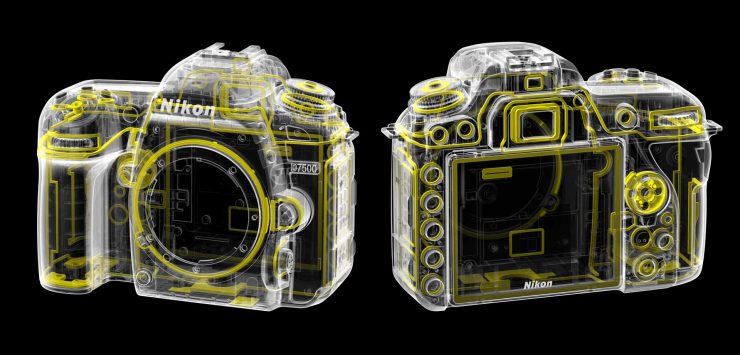
With the differences in battery and body size, the walk-around weight11. This includes the weight of the body, the battery, and the memory cards. It doesn’t include a lens. of the D5600 is about 65% the weight of the D7500, which is also significant. Whether this is an advantage or disadvantage depends on your photographic needs; some photographers (especially those with larger hands) prefer a larger camera with some ‘heft’ to it, while others prefer something more lightweight and easy to carry around, especially travelers and hikers. Needless to say, those who work in harsh conditions will also prefer the D7500’s weather sealing, as long as they also have a weather sealed lens.
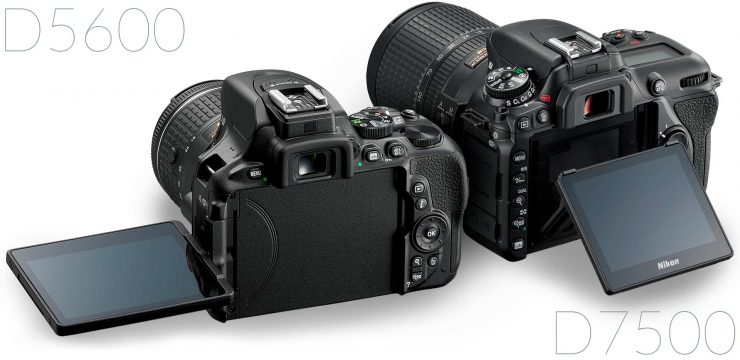
The viewfinder of the D5600 uses a pentamirror while the D7500 uses a pentaprism to reflect the light coming in from the lens to your eye. Pentaprisms offer better transmission of light, but are heavier. The D7500 does have a top LCD panel to help you set and keep track of your settings, which you’ll miss in the D5600 if you’re used to having it. If you’re not, you’ll probably get used to pulling up the same information on the rear LCD instead.
The Sensors
You may be surprised to discover that the D7500’s sensor has lower resolution (20.9 megapixels) than that of the D5600 and older D7200 (24.3 megapixels). There are a few reasons why Nikon made this choice. (Click Headings to Expand)
First, and most importantly, is Nikon’s concentration on high-ISO performance with the D7500. More pixels on a sensor means smaller pixels. Smaller pixels collect less light, but the sensor’s electronics still generate background noise. This results in a worse signal to noise ratio (like a quiet voice talking in the car over the road noise), and thus, more digital noise in the image that results, especially at high ISOs (where the sensor tries to get by with even less light). The D7500 has fewer ‘pixels’ on its sensor, so they’re larger.
As a result, the D7500 has a top native ISO of 51200, compared to the 25600 of the D5600: a full f-stop of difference. However, we’ve found that the D500 (which has the same sensor as the D7500) does not quite have a full f-stop of improvement in quality over the D5600 at high ISO, it’s more like 2/3rds of a stop. At ISO6400, the D7200’s noise is slightly better controlled (finer and smoother) than the D500’s is at ISO12800, though the difference is minimal, and the D500 has better contrast in the comparison.
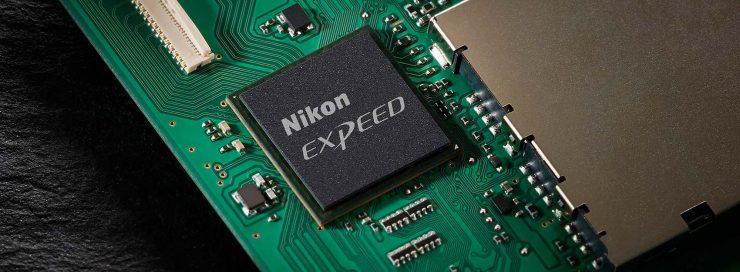
And finally, for most photographers, the difference in resolution between 21 and 24 megapixels just isn’t very significant in real-world use. Remember that most of us use computer monitors that are no larger than 4K resolution (about 8 megapixels), but the vast majority use full HD (1080p is just 2 megapixels), and very few photographers print these days. And if you’re resizing an image from 21 megapixels down to 10% of its original size, all of the fine differences in detail will be thrown out anyway.
But if you do print? Then you’ll have to print LARGE to be able to see these differences… probably 16 x 24 inches or perhaps larger, and the differences even then will be minor. And that’s assuming that you are able to capture a difference to begin with. Only the sharpest lenses have high enough resolution to make a difference, and even then, only when shot from a tripod at the lens’ sharpest apertures, with no vibrations from the wind, ground, shutter, etc. A full frame sensor with the same pixel density of the D7500’s 20.9 megapixel sensor would hold 46.5 megapixels, and Nikon has already admitted that not many lenses can meet the demands of the D810’s 36 megapixel sensor.
Who will benefit from the higher resolution of the D7200? Landscape photographers often shoot in a manner that could make use of it, and so do some commercial/studio photographers and fine-art photographers. But journalists, event photographers, sports photographers, and hobbyists generally do not.
Auto-Focus Systems
Although the Nikon D5600 has a very capable autofocus system for casual, every-day use and action shots in decent light, its 39-points (9 cross-type) lag behind the D7500’s 51 points (15 cross-type) and cameras like Canon’s Rebel T7i and 77D (45 cross-type points, including one dual-cross type), both of which also have fast, accurate autofocus while shooting video or using live-view due to their dual-pixel CMOS sensors. Unfortunately, no Nikon cameras have an equivalent feature for this, so video shooters are much better off with Canon or Sony… if they want to use AF. (Don’t know what cross-type points are? Watch our quick video explanation.)
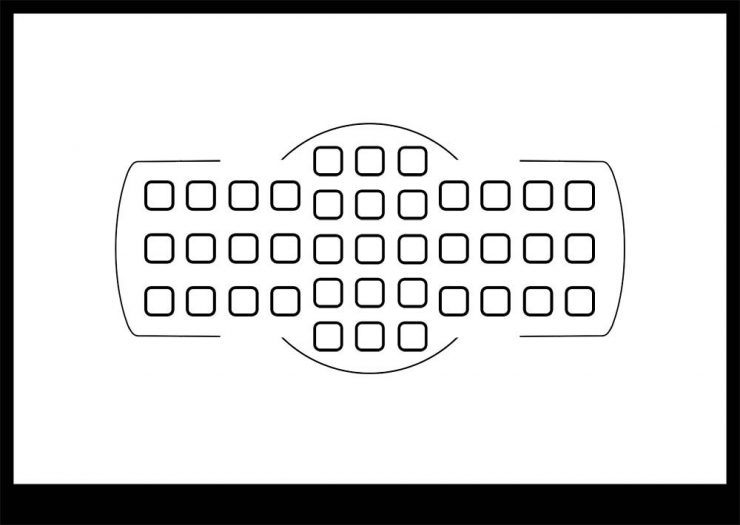
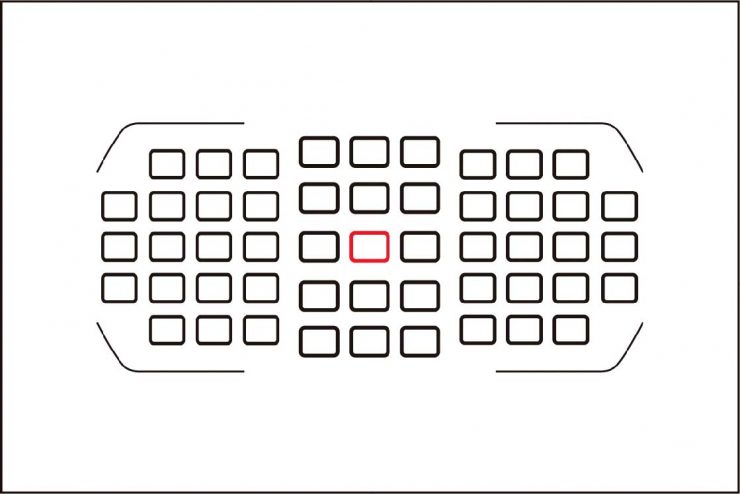
The total number of AF points in the D7500’s AF system are not so important as the fact that all of the 15 central points are cross-type, which makes them much more likely to lock on to a subject and pull focus. Equally important for many photographers, especially wildlife photographers, is the fact that the D7500’s AF system will work at very low light levels: -3 EVs, with compatible lenses. That’s about the amount of light you’d get from a full-moon, which is about 1/4 of the that the D5600 needs to focus.
Photographers who frequently shoot indoor events in low light and wildlife photographers who shoot at dusk and beyond will appreciate the D7500’s AF system. Most photographers, though, will find that the D5600’s system is perfect for casual use, as well as portraits, landscape work, and travel.
Speed
The differences between the D7500 and D5600 are most apparent when it comes to speed. The D7500 has a top shutter speed that is one full f-stop faster than the D5600’s (ie, 1/8000th vs 1/4000th), but the D7500 can also shoot at 8 frames per second, significantly faster than the D5600 at 5 frames per second. Even more dramatically, the D7500 can shoot 50 RAW shots in a row before the buffer is filled, while the D5600 can only shoot 6 RAW shots in a row before bogging down.
However, if you shoot JPG, both cameras are can shoot for about as long as anyone would need: at least 100 full-size JPGs in a row. Many pro sports photographers do shoot JPG, but some like the flexibility of shooting RAW for pulling out more detail, especially in low light.
The D5600’s Downfall: Flash
Flash has been a concern for all of the members of the D5000 line, and the D5600 is no exception. For some reason2 Undoubtedly this was purely a marketing decision to separate to separate the D5000 and D7000 lines, since high-speed-sync requires special functionality for flash units but NOT for camera bodies., Nikon decided to withhold high-speed-sync (Auto FP Flash, henceforth AFP) and commander functionality with the built-in flash. External flash control may not be a big deal; many of us prefer to use radio-units (Pocket Wizard, Phottix, etc) anyway… though the built-in IR system can be very useful with Nikon’s Creative Lighting System (CLS). Hot-shoe mounted flashes with commander-mode capabilities (such as the SB500, SB700, SB5000) can be used on the D5600 and D7500 to control CLS slave flashes.
Lack of HSS/AFP, however, is a serious problem for portrait (and some action) photographers. Imagine this situation: you’re shooting a portrait outside on a sunny evening in the golden hour light, and you want to use a large aperture to blur the background… f/2 or f/1.4, for example. Even at ISO 100, this will push your shutter speed beyond 1/1000ths of a second, which is much higher than the camera’s 1/200th sec. maximum sync speed. So, if you want to use a flash to soften the shadows or create a catch-light in the eyes of your subject, forget it: the flash will not sync. The same is true if you want to use flash for sports and a high shutter speed, and while you can purchase external command modules or radio transmitters for off-camera-flashes, there’s nothing you can buy to work around the lack of AFP. You’d need to buy the D7500 instead.
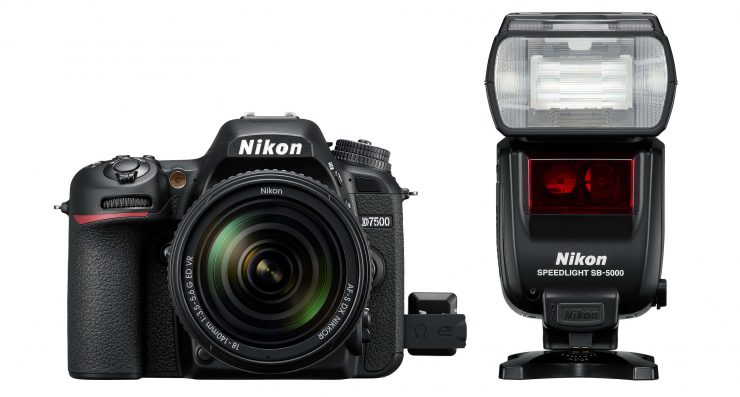
All the Little Things
There are a few other assorted differences that deserve mention here, but they’re mostly the same differences that we saw between the D5000 and D7000. First, the D5600 does not have an autofocus motor built into the camera body, so it will not be compatible with the full range of (old school) Nikon lenses, while the D7500 does posses the motor. And speaking of “focus”, the D7500 is capable of micro focus adjustments to correct for front or back-focus problems on lenses, while the D5600 is not.
Additionally, the D7200 has two User Preset positions on its mode dial (U1 and U2), allowing photographers to store commonly used groups of settings for quick access later. I’ve never found this necessary, but some photographers find them very useful, and they’re not available on the D5600.
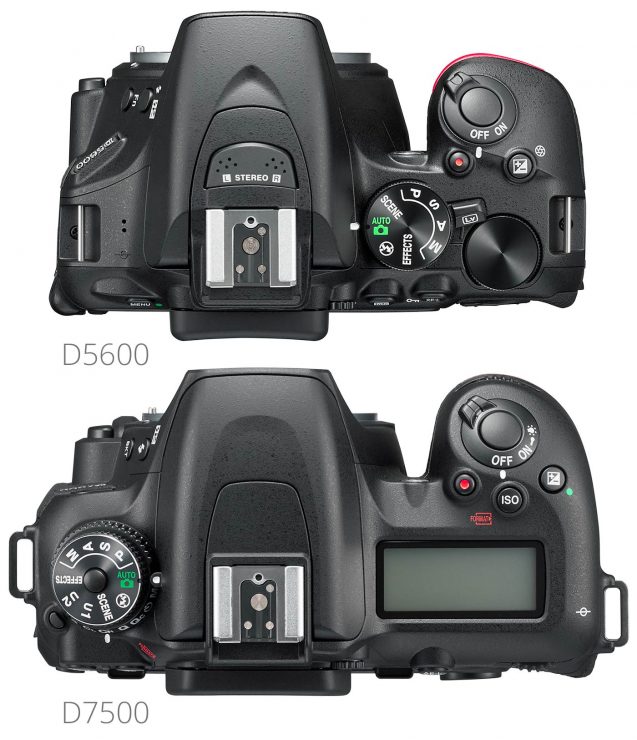
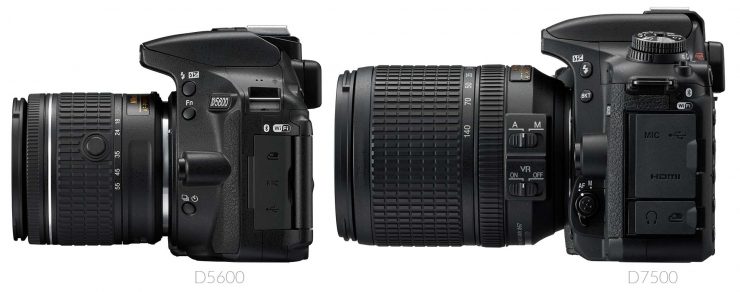
Which Should You Buy?
The Nikon D5600 and D5500 are great cameras, and I’d recommend them for the vast majority of photographers, with the exception of those who need superior flash capabilities. For those of you who focus on action and events, the D7500 has some significant advantages and is the best way to go. The D7200 is less expensive than the D7500 and occupies a great middle ground, with high resolution and fast speeds, but not quite matching the low-light capabilities of the D7500. If you think the D7200 might be a good option for you, check out our comparison of the D7200 and D7500.
To summarize, you should buy the D5500 or D5600 if you:
- want a great, all-around camera
- want the highest resolution sensor for landscapes or other detail critical work
- shoot primarily with natural light (or manual flash)
- need a front-facing LCD screen for vlogging or selfies
- really care about the weight of your camera
- want to save money to buy the best lenses possible! At Amazon, the current price for the D5600 body is currently: $899.00
Buy the D7500 if you:
- shoot in low light
- shoot lots of action, especially in long bursts
- use flash for action or fill, and need high-speed sync
- use Nikon’s CLS and want to use the built-in command module
- shoot macro (or other focus critical work) and need to make micro adjustments to your lenses
- shoot a lot of video and want a simple headphone jack on your camera or 4K resolution
- don’t need to worry about spending a little more. At Amazon, the price is currently: $796.95
For the sake of simplicity I’ve tried to focus on only the differences that, in my experience, will actually be important. There are, of course, numerous differences between the two cameras, though, and some features may be more important to particular photographers. If you think that I’ve left out something important, please feel free to let me know.
Please Comment!
If you have additional questions or comments, please let me know, below. I’ll do what I can to answer questions and clear up any confusion.

